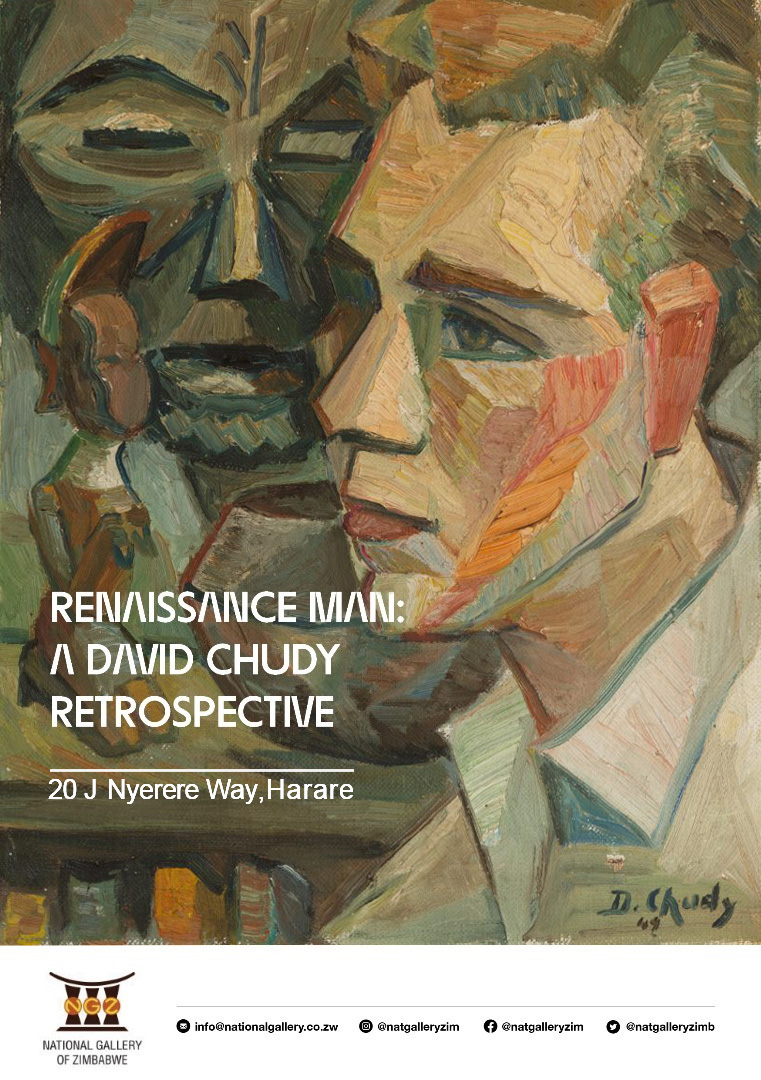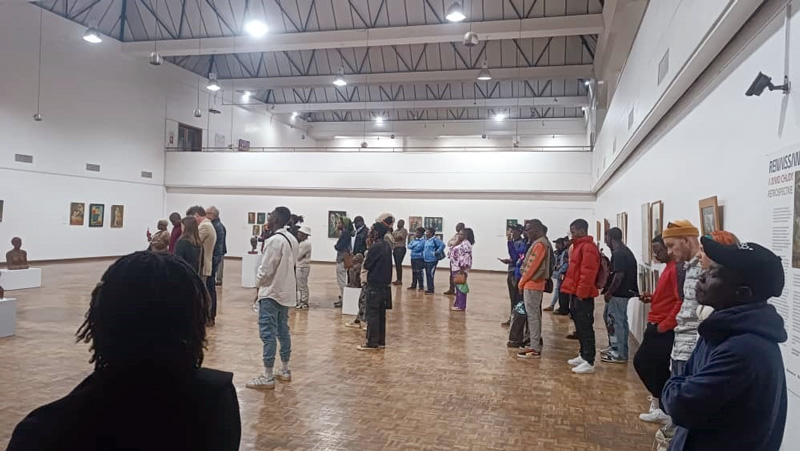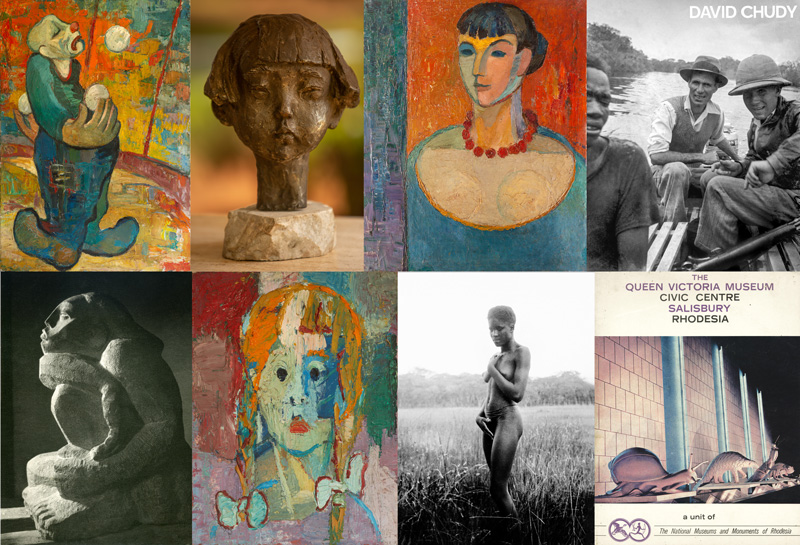
Contact: [email protected]
+1 415 203 3030
FOR IMMEDIATE RELEASE
Global Premiere of ‘Renaissance Man: A David Chudy Retrospective’
opening at the National Gallery of Zimbabwe in June, 2024
This major exhibition features over 250 historically significant paintings, sculptures and photographs by polymath, David Chudy. The collection has never been seen publicly.
Chudy’s work delivers us to the brilliant core of a dynamic and adventurous creative life, cut short 57 years ago, at the age of 51. Chudy was a self-made achiever despite lacking a formal education. He avoided the limelight – both for himself and his work.
Chudy was a refugee from Nazi tyranny in Poland. He found sanctuary in Northern Rhodesia (now Zambia) in 1938 at the formative age of 22. He moved from the Copperbelt (near Congo) to Southern Rhodesia (now Zimbabwe) in 1947, where the bulk of the art was created.
He was one of the earliest serious Western, gallery-style artists in the region (Northern Rhodesia, now Zambia). His art extended later to large-scale architectural public installations in Southern Rhodesia (now Zimbabwe). Chudy’s most visible work consists of a set of huge, ‘out- of-scale’ animal sculptures which front the Zimbabwe Museum of Human Sciences in Harare.
His other works are personal and intimate, consisting of portraiture – both paintings and sculpture – created with the subject in live sittings. He appears to have been the first to cast bronze sculpture, using the lost wax method in Africa, south of the Equator.
In addition to being a prolific artist, Chudy conducted cutting-edge scientific research. He innovated electronic aids for the blind, researched bat echolocation and was embarking on experiments aimed at understanding dolphin sonar and speech.
He journeyed extensively through Africa and the Far East by road. With a vehicle packed with his own paintings and sculptures illustrating his travels, he returned to Zimbabwe. These works are featured in this exhibition.
Also included in the show is a recently discovered trove of portrait and documentary photography from 1938-1957 which has been laboriously scanned and restored. It extends the narrative of Chudy’s work and permits us an enhanced window into his lifelong art adventure.
Chudy’s work offers a unique glimpse of a bygone era. His oeuvre was created before the dramatic political, social and cultural changes, which have colored our memories – namely UDI, the liberation war, independence and the creation of a new Zimbabwean identity. His work retained a palpable optimism and sense of possibility which reflected the best of his own life and times. This positive element is central to the value of his work.
In 1957, he was invited to the sprawling home-studio of Henry Moore at Much Hadham, in England. Earlier, he associated with South African sculptor Mitford Barberton, who was known for large public art. He visited revered Japanese potter Shōji Hamada and his family in Japan.
His work included portraits of significant figures, such as King Mwanawina Lewanika III of Barotseland, as well as others who played a significant role in the country or the self-determination of people of the region.
He was close friends with the legendary Ned Patterson (known as ‘Patterson of Cyrene’), often cited as the father of early art in Southern Africa.
Chudy’s circle also included Lawrence Vambe, author and journalist (an important early black intellectual who significantly contributed to the struggle against colonialism in Rhodesia).
His bust of Guy Clutton Brock evidences another friendship. Clutton Brock is the only European honored as ‘Zimbabwean National Hero’ for his early multiracial outreach and banishment from Rhodesia by Ian Smith’s regime.
Unsurprisingly, it being ‘the early days’ in this part of Africa – which was commonly regarded as an artistic & media backwater – modern visual documentarians were few and far between. Such visual material which has survived to the present has become very precious alongside traditional art.
The National Gallery of Zimbabwe, under executive directorship of Raphael Chikukwa, is playing a meaningful role in preserving art from this era. The gallery is a museum that showcases and preserves the country’s contemporary art and visual heritage, from the beginning of African art to the post-colonial era.
Even now, little is known about Chudy’s earliest years in Poland. Philip Chudy, his son, was 13 when his father died in 1967. Philip is an accomplished artist and photographer, who has devoted himself in recent years to researching his father’s legacy. He has produced a coffee-table-style art book titled, “David Chudy (1916 -1967): Paintings – Sculpture – Photographs”, based on his discoveries.
Additional info:
Exhibition curation:
Fadzai Muchemwa.
Press release images (web use):
https://photos.app.goo.gl/g6oirUQ4kspykH486
(higher res on request)
Website:
http://davidchudy.com/wp
Art book (PDF): David Chudy (1916 -1967): Paintings – Sculpture – Photographs.
http://davidchudy.com/DCHUD2.pdf
A complete collection of his known works are featured, including a narrative of David Chudy’s perspectives.
Interview:
https://youtu.be/MTj_U0ElQeQ?si=dYsX87AlC4IdQi7N
Mukwae Wabei Siyolwe talks to Philip Chudy about his father’s art legacy
Instagram:
https://www.instagram.com/davidchudy/
National Gallery of Zimbabwe – exhibition photos:
https://davidchudy.com/wp/2024/06/20/first-remote-impressions-show-at-the-national-gallery-zimbabwe-june-20-2024/

